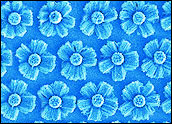
Nanotechnology may be considered one of the most promising new technologies emerging today, but it’s also the source of considerable concern about potential risks to the environment and human health. A new study published Tuesday in Nature Nanotechnology adds further evidence that there’s good reason for that concern.
In the study, titled “Carbon nanotubes introduced into the abdominal cavity of mice show asbestos-like pathogenicity in a pilot study,” researchers injected long, multiwalled carbon nanotubes into the mesothelial lining of the body cavity of mice. What they found was that the nanotubes produced inflammation and lesions known as “granulomas,” much the way asbestos does.
Many questions remain — perhaps most notably, whether the same would happen in human lungs if the nanotubes had been inhaled — but in the meantime, it’s clear any work with nanotubes will have to proceed with caution.
Need for ‘Great Caution’
Carbon nanotubes can have a needle-like fiber shape similar to that of asbestos, which has already lead to speculation that their widespread use could lead to mesothelioma, the same cancer of the lining of the lungs that is caused by asbestos exposure.
The researchers in this study used the mesothelial lining of the body cavity rather than the lungs as a way to test nanotubes’ effects on that type of lining.
The pathogenic results they found are “of considerable importance, because research and business communities continue to invest heavily in carbon nanotubes for a wide range of products under the assumption that they are no more hazardous than graphite,” the authors wrote. “Our results suggest the need for further research and great caution before introducing such products into the market if long-term harm is to be avoided.”
‘It’s a Stop Sign’
Indeed, there have been at least five earlier studies investigating similar questions but focusing more on single-walled carbon nanotubes, Jennifer Sass, senior scientist with the National Resources Defense Council, told TechNewsWorld.
“People are all saying they’re not surprised by this, because these darn little things look like fibers,” Sass explained. “It was testing a hypothesis, so the results are not shocking.”
The results of this research, however — particularly when added to those of the previous studies — amount to “more than a red flag — it’s a stop sign,” Sass said. “This is the evidence where I don’t know what else they’re waiting for.”
Open Questions
Before any definitive decisions about nanotubes and their potential applications can be made, however, a number of questions need to be answered, Kristen Kulinowski, executive director for policy at the Center for Biological and Environmental Nanotechnology, told TechNewsWorld.
Whether similar results would be seen in humans, for example, is something that simply can’t be extrapolated, Kulinowski noted. “We also haven’t established the occupational level of exposure that would be needed to better inform occupational practice.”
Scientists don’t know what might happen if the nanotubes were inhaled, either, she cautioned — whether they could make their way through the lung lining and get through the lung wall, and persist long enough to cause similar pathogenic results, for example.
“I think we need to do follow-up studies to answer those questions,” Kulinowski said. “This will help us get a better understanding of the potential impacts on human health. A lot more information would round out the risk profile — this study was just a piece of the puzzle.”
Smart Tech, Smart Development
In the meantime, however, “we don’t need to wait until all these questions are answered,” Sass asserted.
Rather than putting a halt to all work with nanotubes because of possible dangers, a better approach would be to identify the specific risks and then minimize and manage them, she added.
“We don’t want to say no to these materials — there’s real value to them,” Sass said. “This is smart technology — we just need to develop it in a smart way.”
Part of that smart approach, she added — at least until the risks are better understood — will be not using them where they could be released to the environment or where there could be human exposure, she explained.
A Positive Spin
Results from the study were not all discouraging, either, Sass noted.
Specifically, carbon nanotubes come in many shapes and sizes, and the research showed that it was the long, straight variety that was the problem. Accordingly, that knowledge could be used to simply eliminate that particular type from the supply chain, leaving the many other varieties available for potentially safer use.
“For the most part, manufacturers don’t have a lot of quality control on ingredients when they add them — there’s a whole distribution of sizes and shapes in there,” she explained. “This study says we need to go back to the suppliers and ask them to keep the long, straight ones out.”
In that way, the research could enable manufacturers to “build safety into the actual ingredients,” Sass concluded. “That’s a better spin than saying we should never use nanotubes in anything. If we’re smart enough to develop the technology, we’re smart enough to do it safely.”





















































